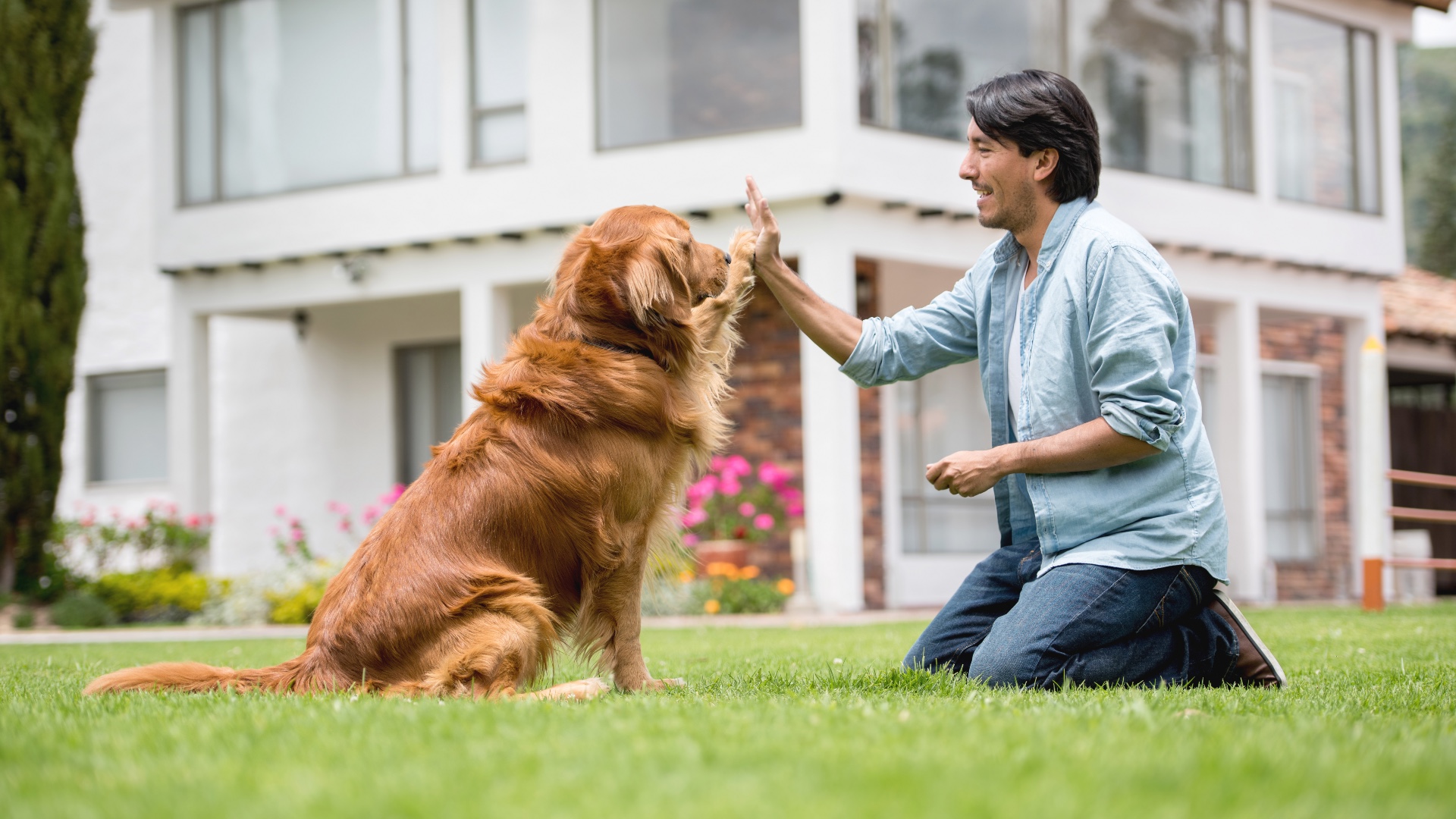Want your dog to feel happy during training sessions? Then you need this trainer’s four easy tips
Make training sessions with your dog more enjoyable and deepen your bond with this trainer's four simple tips

While there are so many wonderful parts to being a dog owner, helping our pups to learn the behavior that's expected of them can often feel like one of the most challenging parts of pet parenthood.
Even armed with a bag of the best dog treats, training our dogs to walk well on a loose leash, to not bark at the doorbell, jump up at strangers or cry when they're put in their crate all take a great deal of time, patience and consistency to teach.
And while it can often feel like a frustrating process for us humans, training can also cause unhappiness in our pups if we're not paying attention to their emotional experience.
According to Julianna DeWillems, owner and head trainer at JW Dog Training & Behavior, how you train matters, because how your dog feels matters. "Your training has an impact on the bond you have with your dog," she explains.
So, with that in mind, how exactly can you go about making training sessions more enjoyable for your fur friend? Well, in a video shared to Instagram, DeWillems outlines four steps you can take to help make the training process fun and stress-free. You can check out the clip below or read on for a summary of the key points:
A post shared by JW Dog Training & Behavior (@jwdogtraining)
A photo posted by on
"Emotions and training - they're there whether you recognize them or not," says DeWillems. "Classical conditioning is always at play. How you train impacts how your dog feels during training and this feeling can spill over into your overall relationship with your dog."
To help make training sessions more enjoyable for your pup and strengthen the bond the two of you share, DeWillems recommends doing the following four things:
PetsRadar Newsletter
Get the best advice, tips and top tech for your beloved Pets
1) Reward frequently: "This creates lots of opportunities for 'wins' with your dog."
2) Make sure your cues and criteria are clear: "Training is more effective when we make it easy for our dogs to get the “correct” answer, which also reduces frustration."
3) Be positive: "Focus on positive reinforcement, teaching & building desirable behaviors using rewards."
4) View mistakes in a new way: "Use errors as information for how you need to change your training to make it more clear."
According to DeWillems, following the above steps can be hugely beneficial when it comes to increasing your dog's motivation to carry out a desired behavior.
"When dogs enjoy training and feel comfortable & low stress, their responses become strong & reliable."
If you find that you and your pup would benefit from some 1:1 support when it comes to training particular skills, we recommend reaching out to a professional trainer for advice and guidance. You might also enjoy our training guides to how to stop a dog from jumping up and how to crate train a dog.

Kathryn is a freelance writer who has been a member of the PetsRadar family since it launched in 2020. Highly experienced in her field, she's driven by a desire to provide pet parents with accurate, timely, and informative content that enables them to provide their fur friends with everything they need to thrive. Kathryn works closely with vets and trainers to ensure all articles offer the most up-to-date information across a range of pet-related fields, from insights into health and behavior issues to tips on products and training. When she’s not busy crafting the perfect sentence for her features, buying guides and news pieces, she can be found hanging out with her family (which includes one super sassy cat), drinking copious amounts of Jasmine tea and reading all the books.
